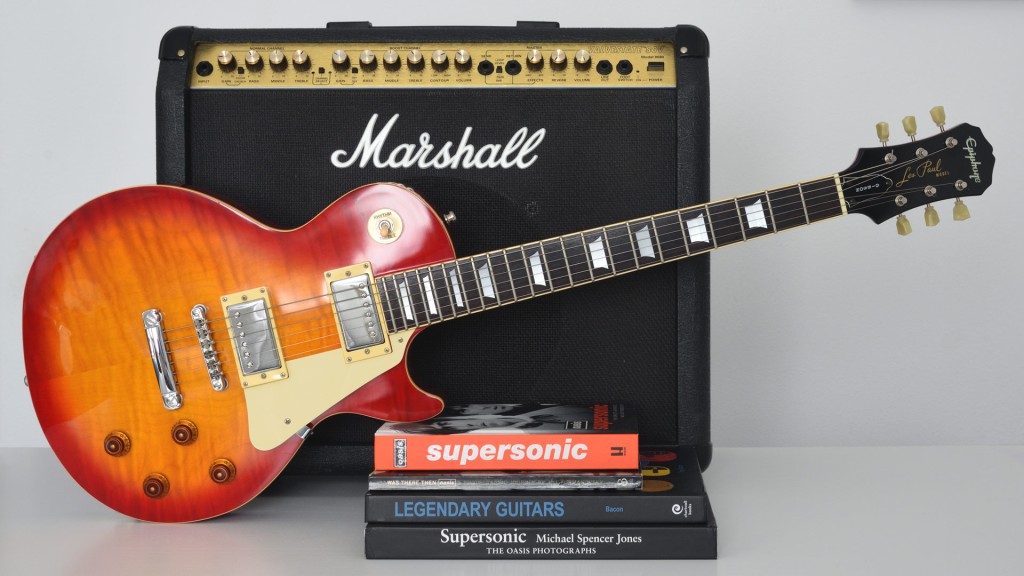
When people ask how to replicate that classic oasis sound from Definitely Maybe, one common answer is “just get a Marshall“. And then they start thinking about huge stacks and overkill 100-watts amp heads.
Noel and Bonehead did play powerful Marshall tube amps later on, but the real answer to that question will not necessarily hurt your neighbor’s ears or your bank account: the Marshall that Noel actually used is a much more modest Valvestate combo – often coupled with a small WEM Dominator Mk.III tube amp.
Keep reading this article for the in-depth analysis…
We are talking about a Marshall Valvestate 80V (Model 8080), a small-ish combo amp with a single 12″ speaker produced between 1991 and 1996.
Let’s be honest: most gear snobs1 and tube-amp aficionados would sneer at it.
CONTENTS:
- What’s a Marshall Valvestate?
- Noel’s Valvestate 80V through the years
- That early Oasis sound
- Playing through a Valvestate in 2024
- Useful stuff
What’s a Marshall Valvestate?

The Valvestate series of amps was criticized by purists at the time, because it was essentially a solid-state, transistor-based design with just one small tube.
What Marshall did was put a single 12AX7 valve into the pre-amp section of the amplifier while retaining solid-state technology in the rest of the amp. This created a hybrid, valve-state amplifier (hence the name) that replicated the traditional Marshall tone quite well even at lower volumes, while adding reliability and affordability.
To be honest, the valve just adds a little colour to the sound: the hard work is done by the transistors here. Nevertheless, quoting Marshall’s words: “despite the scepticism, the series sold extremely well.“2


The 80V (aka Model 8080) was among the most successful amps of the Valvestate series: it had a dual channel, an FX loop and a real spring reverb. Its 80 watts output was loud enough for most situations.
A head-only unit (i.e. an amp without internal speakers) was also available, with nearly identical specs except for a slightly higher power output of 100 watts: it was appropriately named Model 8100.
By the way, all the amps of the first Valvestate series were still made in England at Milton Keynes: they are very well-made and sturdy.
Noel’s Valvestate 80V through the years
It is very likely that Noel bought the amp new sometime in 1992.3
It can be seen in one of the earliest known pictures of Noel playing guitar on stage, sporting a very unusual (for him) Fender Jaguar. At the time the Valvestate was his only amp.


In the first half of 1993 he bought a WEM Dominator Mk.III at Johnny Roadhouse, and he started using the two amps together, with the Marshall on top. This was Noel’s live setup until mid 1994.
The Marshall/WEM mix can be seen in the famous short clips of the band performing All Around the World and I Am The Walrus at the Boardwalk. While it is often labeled as “1992”, the date is evidently wrong and the filming actually happened in September 1993.4
In October 1993, Oasis recorded the demo of Shakermaker at Out of the Blue studios, Manchester. The Marshall and the WEM were both used during the sessions, as seen in the excellent pictures by M.S. Jones.5 Noel played his Epiphone Les Paul throughout the takes.
This very recording was later remixed by Owen Morris for the album, with re-recorded vocals due to the Coca-Cola incident.6
In January 1994, Oasis went to Monnow Valley studios in Wales to record Definitely Maybe, their debut album. The Marshall 8080 was used again, but this time Noel mainly played a few guitars from Johnny Marr’s vault, including the now famous Cherry Sunburst Gibson Les Paul and a Gibson Flying V. Most of the recordings were scrapped: only Slide Away ended up on the final version of the album.7
In late February, the band relocated to Sawmills studios for a second attempt: very few pictures of these sessions exist, but it is likely that the Marshall and the WEM were both used on every song that was recorded.
Noel’s guitars were his own Epiphone Les Paul and Johnny Marr’s Cherry Sunburst Gibson Les Paul, which he had decided to keep for himself! The other guitars that were previously used at Monnow Valley had been returned to Johnny.
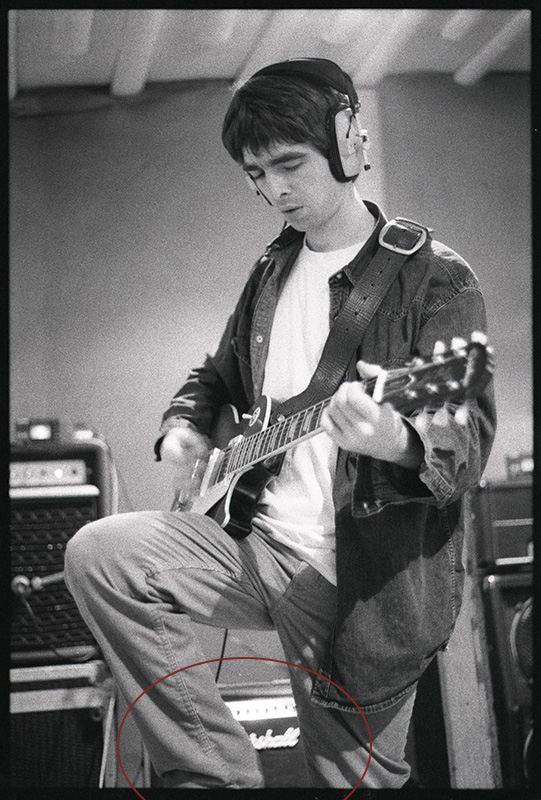
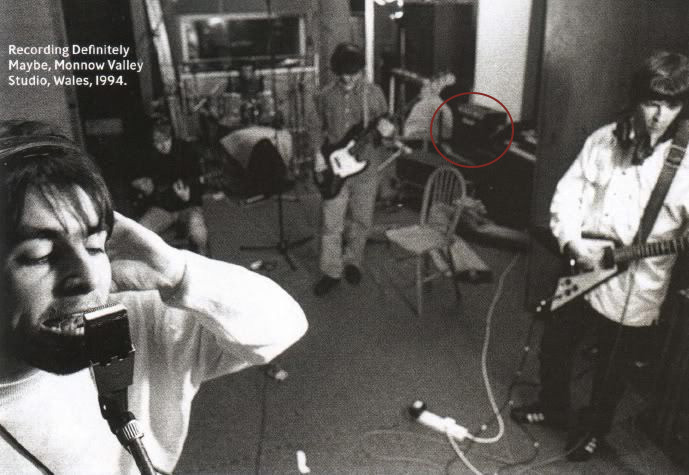
On 27 January 1994 Oasis performed at Water Rats, in London: in this occasion the Marshall was flanked by a VOX AC30 – probably the same one that can be seen in some photos taken at Monnow Valley studios. At the end of March 1994 the Marshall/WEM duo was back for the first real UK tour.8
During the same month, the band had their first TV appearance, performing Supersonic for Channel 4’s late-night entertainment show The Word: again, Noel’s rig was the usual Marshall/WEM blend.



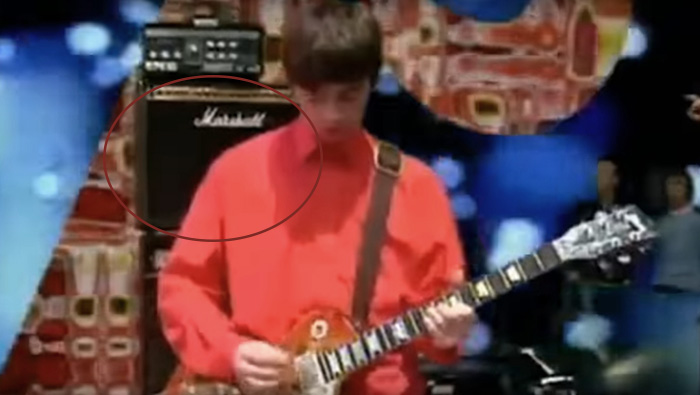
As the gigs were getting bigger, Noel decided to replace the small 15-watts WEM with an Orange head and a matched 4×12 cab: this setup was used at Glastonbury on 26 June 1994, for instance. The humble Valvestate Marshall was still there, providing its gritty, MOSFET-driven tone.
In May the band had filmed the Shakermaker video in Manchester: the Marshall can be spotted multiple times during the clip.9

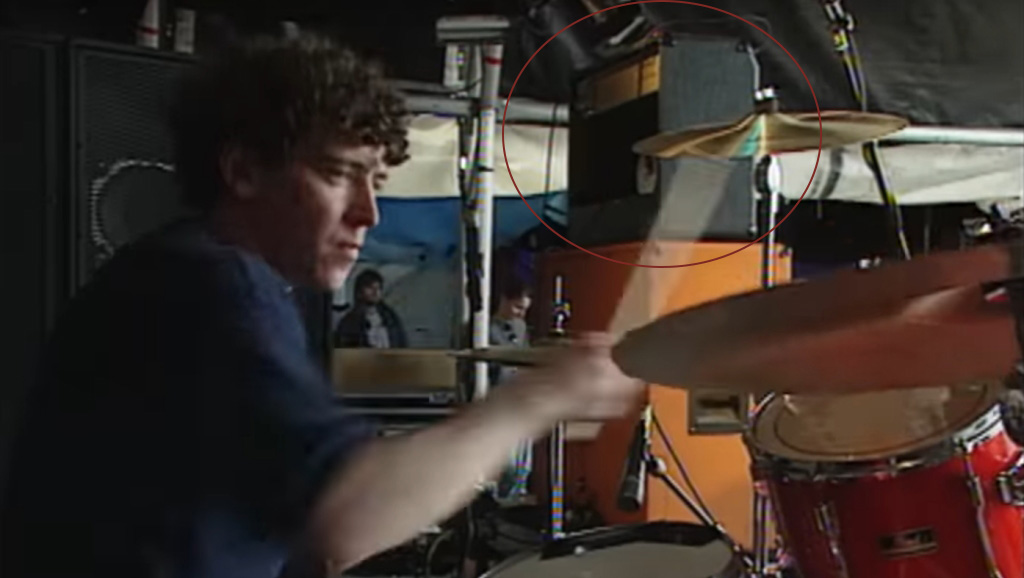

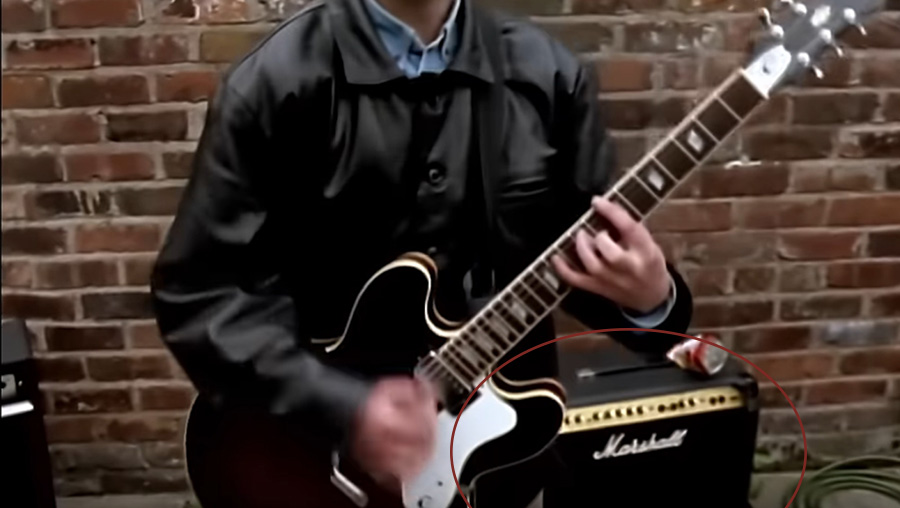
Then, sometime in July 1994, Noel went big and he bought a classic Marshall JCM900 tube head with a full stack of two 4×12 cabinets: this setup was used for the rest of 1994 and most of 1995.
The Orange head & cab were later sold, but the WEM Dominator and the Marshall Valvestate are still in Noel’s possession.
That early Oasis sound
In 2023, Noel Gallagher talked extensively about his Marshall Valvestate during the must-watch interview10 with Dan & Mick from That Pedal Show:
“Last night I was doing a bit of looking on Youtube… and I’ve realized it’s a metal amp! When it came out, it was a hi-gain metal amp! If I had known that at the time, I would have never gone near it!”
The Valvestate amps were indeed very hi-gain units, often used (and still highly praised) by heavy metal guitarists. When asked about the dual-amp setup, Noel replied that it was probably suggested by Mark Coyle:
“I don’t know, I think I had found the Marshall a bit thin sounding, and I don’t know… It might have been my sound engineer at the time, Mark Coyle. […] The two of them together [the WEM and the Marshall], they just sound amazing. […] The Marshall, it complemented that WEM so much: […] the WEM would have maybe been too retro and the Marshall maybe sounded a bit more modern and in your face.”
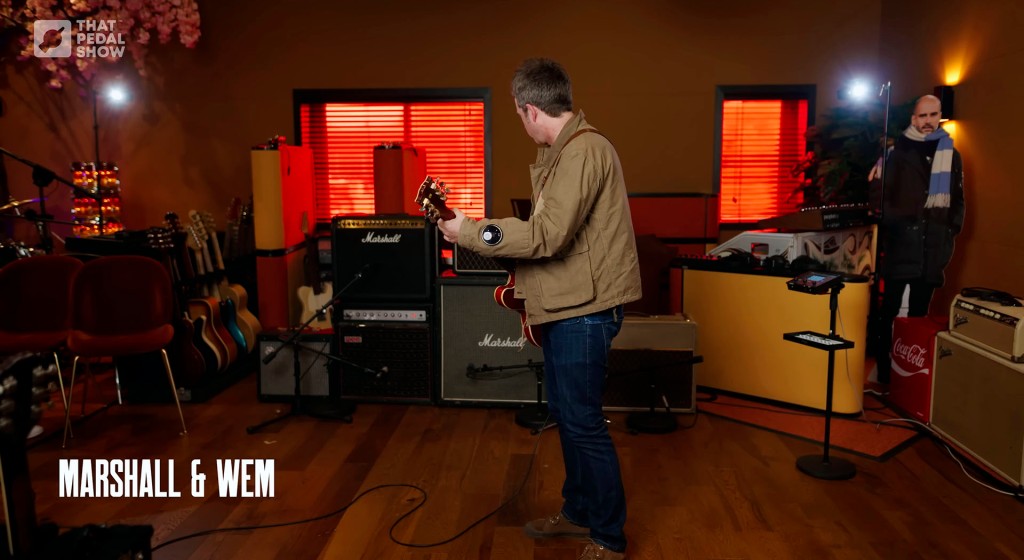
It seems that blending a vintage, tube-amp sound with the more modern grit of the Valvestate was the key to that legendary early Oasis sound:
“It defines ‘in your face’. There’s no fu**ing around with that sound. […] All the sounds of the ‘dirt’, they’re all from the amplifiers. When doing Definitely Maybe, we never had one single pedal apart for the Space Echo.“
The Ibanez TS-9 Tubescreamer is often cited as the essential pedal to achieve the Oasis sound: however, the truth is, Noel didn’t use it until the 2000s. During the golden years, the overdriven sound came from the amps themselves.
Now that you know this, you can search eBay or Reverb to find a Valevestate while they’re still quite cheap! They may never become very sought-after amps, but a decade ago, they could be bought for peanuts: nowadays a Model 8080 like Noel’s – in good condition – can be found for around £200.
Its association with Oasis will undoubtedly make it a lot more desirable in the coming years.
Playing through a Valvestate in 2024
Being such an anorak, I couldn’t resist getting a Valvestate Model 8080 just for the sake of it. After a brief search, I managed to find a near-mint example from 1995 at a good price, and I bought it.
Last year, I also acquired an Epiphone Les Paul with the same exact specifications as the one that Noel had: made in the early ’90s in the Korean Samick factory, finished in Cherry Sunburst and with a lightly flamed top (and 100% original without modifications).
Again, it was just for the sake of it, you know! Just don’t tell my better half.
What’s better than playing through the Marshall Valvestate with the actual model of guitar that Noel used in the early gigs, to record Shakermaker and Supersonic, and during the Definitely Maybe sessions?
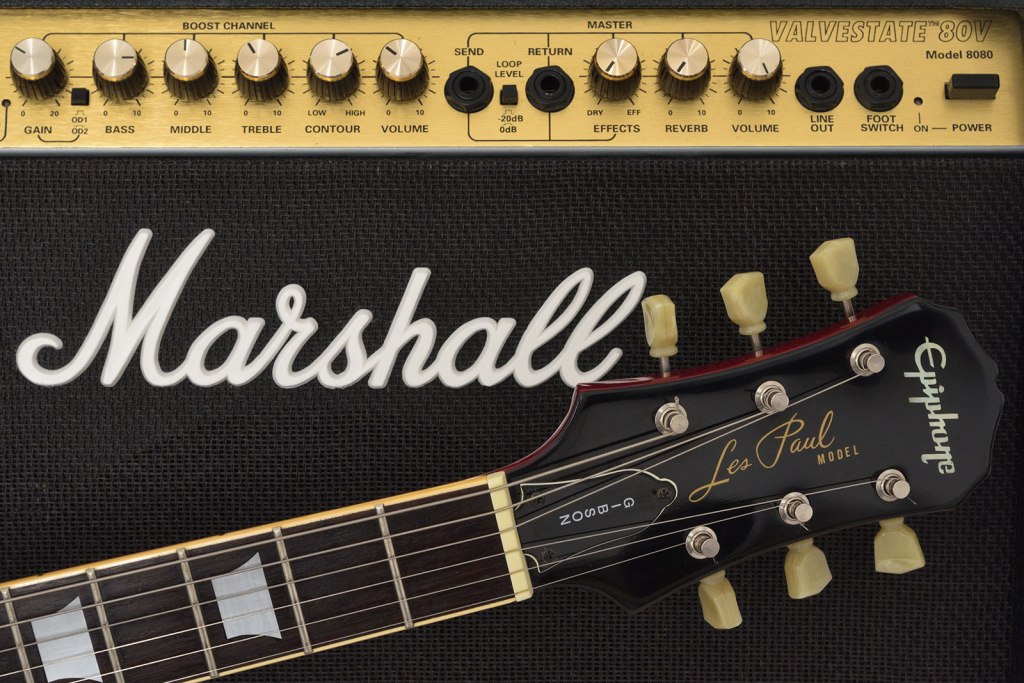
The Clean/Crunch channel, even if it does sound pretty good, is not really useful to achieve ‘that‘ sound. After all, you don’t typically get a Marshall for clean sounds.
The Boost channel has two overdrive settings, labeled “OD1” and “OD2“.
The first one delivers the classic, British rock sound – very ’70s, very Marshall. OD2 goes straight into metal territory, but it nail the Oasis sound at lower gain values and at volumes past 12 o’ clock.
It is good – and incredibly loud if you turn the volume knob beyond 3 o’ clock. However, it lacks a bit of punch: it sounds a tad hollow and sterile on its own. The original, cheap and slightly ‘tinny’ ’90s Epiphone pickups don’t help either.
But when you pair the Valvestate with a small tube amp, as Noel did with the WEM… here’s our desired ‘in your face‘ blast. I’ve used my faithful Orange lunchbox head: it delivers 15 watts like the WEM, with a similar rich warmth.
Now, just add a sprinkle of delay, play the intro riff of Supersonic… and feel a huge grin spread across your face.
It is that sound.

Useful stuff
- Gear snobs? Here I am! ↩︎
- https://marshall.com/live-for-music/history/history-of-valvestate ↩︎
- That Pedal Show, 2023 ↩︎
- Thanks to asimarx from the live4ever forum who put together some insight by Oasis Recording Info and Shakermaker‘s Youtube channel. ↩︎
- https://www.michaelspencerjones.com/ ↩︎
- Thanks to davidjay from the live4ever forum. ↩︎
- http://www.oasis-recordinginfo.co.uk/?page_id=588 ↩︎
- https://www.oasis-live.net/shows/1994 ↩︎
- Thanks to live4ever forum user oasisunited for narrowing down the date. ↩︎
- That Pedal Show, 2023 ↩︎
